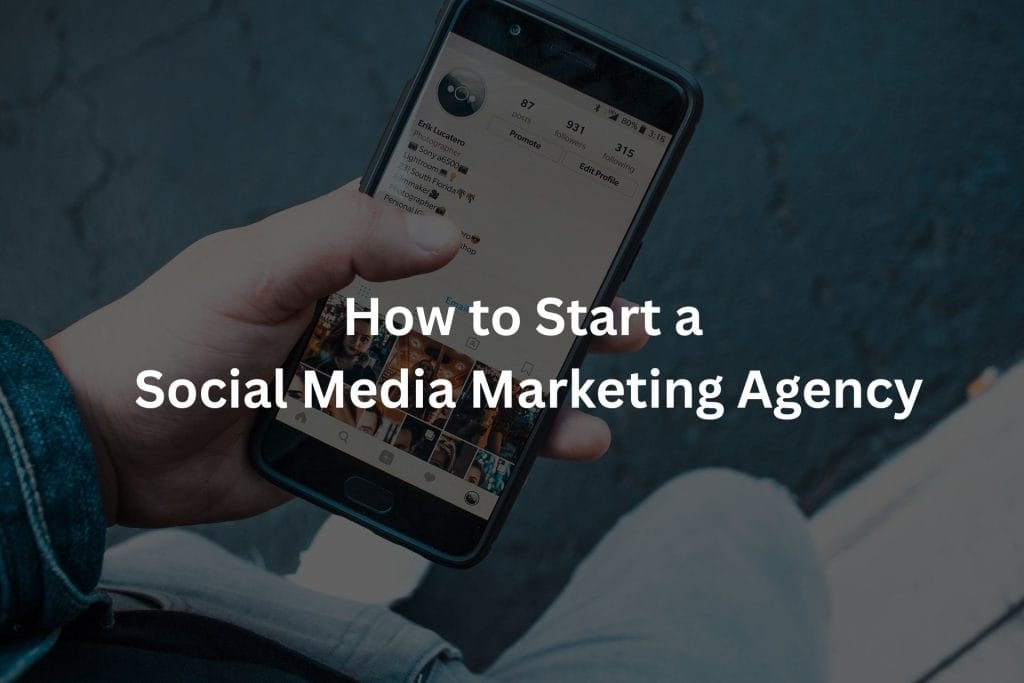Starting a social media marketing agency (SMMA) can be an exciting and profitable venture—especially if you’re passionate about digital marketing, branding, and helping businesses grow online. But where do you begin? How do you stand out in a crowded market? And most importantly, how do you turn your skills into a thriving business?
Why Start a Social Media Marketing Agency?
Social media isn’t just for sharing memes or catching up with friends—it’s a powerhouse for businesses. Platforms like Instagram, TikTok, and LinkedIn drive sales, build brand loyalty, and create communities. As a social media marketing agency, you’ll help businesses shine online, and the demand is skyrocketing. According to recent trends, over 4.9 billion people use social media globally, and businesses are eager to tap into that audience. But what makes this venture so appealing? Flexibility, creativity, and the chance to make a real impact. Curious about the first step? Let’s lay the groundwork.
Step 1: Understand the Social Media Landscape
Before you jump in, you need to know the terrain. Social media marketing isn’t just posting pretty pictures—it’s about strategy, analytics, and understanding what makes people click. Familiarize yourself with major platforms like Instagram, Facebook, Twitter, LinkedIn, and TikTok. Each has its own vibe: Instagram loves visuals, LinkedIn is all about professional networking, and TikTok thrives on short, catchy videos.
Spend time exploring these platforms. Follow brands, watch how they engage, and note what works. Pro tip: Tools like Hootsuite or Buffer can help you peek at analytics and trends without needing a tech degree. Want to know the secret to standing out? It’s all about finding your niche, which we’ll dive into next.
Step 2: Find Your Niche and Define Your Services
Here’s where things get exciting. Not every agency can (or should) do everything. Specializing in a niche—like fitness brands, local restaurants, or e-commerce—sets you apart from the crowd. Ask yourself: What industries am I passionate about? Maybe you’re a foodie who loves creating mouthwatering Instagram Reels, or perhaps you’re a tech geek who can craft killer LinkedIn posts for startups.
Your services might include:
- Content Creation: Designing eye-catching posts, videos, or stories.
- Social Media Management: Scheduling posts and engaging with followers.
- Paid Advertising: Running targeted ads on platforms like Facebook or TikTok.
- Analytics and Reporting: Tracking performance to show clients results.
Choosing a niche feels like picking a favorite song—it’s personal and powerful. But how do you make it official? Keep reading.
Step 3: Build Your Brand Identity
Your agency needs a personality that screams “trustworthy” and “creative.” Start with a catchy name—something memorable like “SparkVibe Studio” or “DigitalGlow Agency.” Next, create a logo and a website. Don’t worry if you’re not tech-savvy; platforms like Wix or Canva make it easy to design professional-looking sites and graphics without coding.
Your brand’s voice matters too. Is it fun and quirky or polished and professional? This voice will carry through your website, social media, and client pitches. Speaking of pitches, how do you convince clients to choose you? That’s where your skills come in, and we’re about to level them up.
Step 4: Develop Your Skills and Tools
You don’t need to be a tech wizard, but a few skills will make you unstoppable. Learn the basics of:
- Content Creation: Use tools like Canva for graphics or Adobe Express for quick videos.
- Analytics: Platforms like Google Analytics or Meta Business Suite show what’s working.
- Advertising: Study Facebook Ads Manager or TikTok Ads to create campaigns.
- Communication: You’ll need to explain complex ideas in simple terms to clients.
Free resources are your best friend. Check out YouTube tutorials, HubSpot’s free courses, or blogs like Social Media Examiner. Want to know a game-changer? Mastering just one platform, like Instagram, can make you a go-to expert. But what’s next after you’ve got the skills?
Step 5: Create a Business Plan
A business without a plan is like a ship without a map—drifting and risky. Your business plan doesn’t need to be a 50-page document. Keep it simple:
- Mission Statement: Why does your agency exist? (e.g., “To help small businesses shine on social media.”)
- Target Market: Who are your ideal clients? (e.g., local cafes, fitness coaches.)
- Services and Pricing: Will you charge per project, hourly, or monthly retainers?
- Marketing Strategy: How will you find clients? (Think LinkedIn outreach, local networking, or even TikTok videos showcasing your work.)
- Budget: Account for tools, website hosting, or advertising costs.
A solid plan keeps you focused, but there’s one hurdle every new agency faces: legal stuff. Don’t worry—it’s simpler than it sounds.
Step 6: Handle the Legal Side
Starting a business means crossing some T’s and dotting some I’s. Register your agency as a legal entity, like an LLC, to protect your personal assets. Check with your local government for specific requirements—most have online portals to guide you. You’ll also need:
- A business bank account to keep finances separate.
- Contracts for clients to outline services, payments, and expectations.
- Basic accounting software like QuickBooks or Wave to track income and expenses.
Not sure where to start? Online platforms like LegalZoom can help with registration, and templates for contracts are widely available. With the legal side sorted, you’re ready to find clients—but how?
Step 7: Attract Your First Clients
Here’s where the magic happens. Landing clients is about building trust and showing value. Start small:
- Network Locally: Reach out to small businesses in your area, like cafes or gyms. Offer a free audit of their social media to show what you can do.
- Leverage Social Media: Post tips, behind-the-scenes content, or mini-case studies on your own profiles to attract attention.
- Cold Outreach: Send personalized emails or LinkedIn messages to potential clients. Keep it short and focus on how you can solve their problems.
- Freelance Platforms: Sites like Upwork or Fiverr can help you land initial gigs while building your portfolio.
The first client is the hardest, but once you get one, word-of-mouth spreads like wildfire. Want to know how to keep them coming back? It’s all about delivering results.
Step 8: Deliver Results and Build Relationships
Clients want one thing: results. Whether it’s more followers, higher engagement, or increased sales, you need to show impact. Use analytics tools to track metrics like reach, clicks, or conversions, and share monthly reports with clients. But don’t just throw numbers at them—tell a story. For example, “Your Instagram campaign reached 5,000 new people, leading to 50 website visits!”
Building relationships is just as crucial. Respond to client emails promptly, listen to their needs, and be proactive with ideas. Happy clients become repeat clients, and they’ll refer you to others. But what happens when your workload grows?
Step 9: Scale Your Agency
Once you’ve got a few clients, it’s time to think bigger. Scaling means working smarter, not harder. Consider:
- Hiring Freelancers: Bring on graphic designers, copywriters, or ad specialists to handle overflow.
- Automating Tasks: Tools like Later or Sprout Social can schedule posts in bulk.
- Expanding Services: Add offerings like influencer marketing or SEO to attract bigger clients.
Scaling too fast can be a trap, so take it slow and steady. Curious about the biggest mistake new agencies make? It’s not planning for growth, and we’re about to fix that.
Step 10: Stay Ahead of Trends
Social media changes faster than you can say “algorithm update.” To stay relevant, follow industry leaders, subscribe to newsletters like Social Media Today, and experiment with new features (like Instagram Reels or Twitter Spaces). Attend webinars or virtual conferences to learn from experts. The more you know, the more value you bring to clients.
But here’s the kicker: success isn’t just about trends—it’s about passion. If you love creating content, connecting with people, and solving problems, your agency will thrive.
Common Pitfalls to Avoid
Starting an agency is exciting, but it’s not all smooth sailing. Watch out for:
- Overpromising: Be honest about what you can deliver.
- Underpricing: Value your time—don’t work for peanuts.
- Ignoring Analytics: Data tells you what’s working and what’s not.
- Burnout: Set boundaries to avoid working 24/7.
Avoid these traps, and you’ll be miles ahead of the competition. Ready for the final piece of the puzzle?
Conclusion
Launching a social media marketing agency is more than just a business venture—it’s a chance to unleash your creativity, connect with people, and build something extraordinary. With the steps outlined, you’re armed with the tools to turn your vision into reality. Sure, there’ll be challenges, but every hurdle you clear brings you closer to success. So, take a deep breath, trust your instincts, and start small. Before you know it, you’ll be crafting campaigns that light up the digital world.



